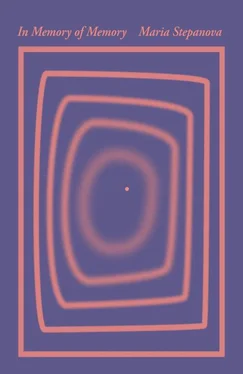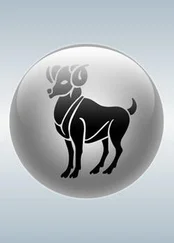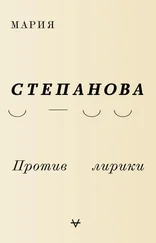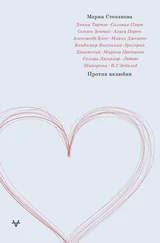*
As a child I was always very disappointed by the professions and activities of my family. Engineers and librarians, doctors and accountants, my relatives represented the full range of the ordinary and humdrum; nothing special or exciting, nothing adventurous. Although one of my great-great-grandfathers did sell ice cream in a shtetl near Nevel, and that was far more interesting to me as a child than the agricultural machinery sold by the other. The black-and-white television at the time showed endless newsreels of combine harvesters chewing through the thick corn and I could not have predicted that anything of interest would ever come of those fields.
At the beginning of the 1990s, when food was scarce, my father traveled to the south of Ukraine with a friend to see whether he couldn’t sell something in return for food. He came back from Kherson with some photographs, and he and my mother spent ages looking at them before bringing a set of old architectural plans down from a top cupboard. Grandfather Lyonya’s family house in Kherson was a fine-looking building with a wide balcony supported by two bearded Atlases in loincloths. It was odd and pleasant to imagine all those rooms and windows occupied by just one family, but it seemed outlandish in comparison with my day-to-day life at the time: ration books were being reintroduced, we had coupons for cigarettes. Very well-to-do people, my mother said, repeating someone else’s words from long before, and for some reason their well-to-do-ness seemed even more tedious than their agricultural machinery.
There are so many stories in which a person turns out to be not what they seem at first sight. The frog prince, for example, or the superhero masquerading as a bespectacled boy. When I began my blind groping for family history over the last hundred years, what had seemed initially to be well-documented and interesting momentarily evaporated as I reached for it, crumbling like ancient fabric. My guesses were confounded, my witnesses slow to step forward, but there was one exception to this. When I entered “Gurevich, Kherson” into the search engine, the answers came tumbling out as if I’d won on a slot machine.
A side street in Kherson now bears the name of my great-great-grandfather — it had once borne the name of a Communist, but Ukraine was removing traces of its Soviet heritage. The Gurevich concern had included a number of factories (so many I couldn’t immediately distinguish them all) with substantial income — a Soviet brochure described with disgust the more than four million rubles of total profit he made in 1913. By current standards this amounts to about fifty million dollars, which explains the provenance of the Atlases on the facade. On a history website I found an image of a blue-and-white bond issued in December 1911 in Basel. The Société Anonyme des Usines Mécaniques I. Hourevitch was attracting new investors, and in the oval medallions on the bonds you could see, as if through an arrow slit, two model factories, surrounded by what look like poplars, smoke issuing through the chimneys and ponies-and-traps driving through the front gates.
This predecessor of ours was a famous man. A telegraph addressed to him read simply: KHERSON, GUREVICH. He appeared in the area at the beginning of 1880s and began with a workshop repairing carts, and then an iron foundry. Over twenty-five years he achieved a great deal. There were a few big factories in the southern town of Kherson (kerosene streetlamps, parks, five chemist shops, six libraries, 227 hansom cabs) — and Great-Great-Grandfather’s were the largest, employing five hundred people. I was even able to track down wages at the factories: nine and a half rubles a day for a qualified worker, forty kopecks for an apprentice.
I was vaguely bothered that I hadn’t found anything “living” in all the array of documentation I had unearthed, anything that wasn’t simply an illustration of the history of capitalism in Russia. The internet was happy to tell me about Isaak Gurevich’s income and expenditure, but there wasn’t one photograph of him online. I found a catalog of produced goods, printed in good taste, with curlicues at the corners and attractive diagrams of plows and seed drills, resembling large insects. The implements had fashionable names from the era, vaguely reminiscent of racing horses: “Universe” and “Dactyl” and “Phryne” and even the unlikely English word “Dentist.”
“One may always choose a layer of earth moist enough for the successful growing of seed,” the sales brochure says. But I found nothing at all about Isaak Gurevich’s seed, as if neither he, nor I (by extension) existed. Even the website of the Jewish cemetery only promised to show the monuments “to the family of the founder and owner of the agricultural machinery factory Israel Zelmanovich Gurevich” — it seemed the man himself wasn’t buried there.
There was a dissonance between the excess of information about one aspect of his life and the absence of information about the man himself, and it began to gnaw at me as if something invisible was pulling at my sleeve or twitching my collar. In my home, where nothing of sentimental value was ever thrown away, and lace collars and dickeys lay moldering in suitcases for decades, there was absolutely nothing from the wealthy Kherson household. This in itself was strange. I made a mental list of all the old furniture I had grown up with, the worn bentwood chairs and the ancient crockery, and I realized that my assumptions were right: everything came from that short period when Sarra and Misha were married, working, and setting up house. There was nothing from the Gurevichs, apart from the ring my mother refused to wear. Then, for the first time, I asked myself what I really knew about my great-grandfather, the son of Isaak / Israel.
I had two documents. The first was on thick card, pleasant to the touch, with a tiny ribbon attaching a second card to the first. It was an invitation to the circumcision of the tiny Lyonya. The second was a death certificate for my great-grandfather Vladimir Gurevich (“Moisey Vulf” in brackets) who died in Odessa of brain inflammation at the age of thirty-three on June 25, 1920. At the beginning of February that year the very last refugee boats from the Civil War left the Odessa harbor. An eyewitness remembers the crowd on the pier, a woman with a pram desperately searching for her husband and child, and another woman dragging a gold-framed mirror behind her. The Red Army entered Odessa soon after and set up their infamous secret police. News of my great-grandfather’s death only reached the family two years later in 1922.
My taciturn great-grandmother Betya did have one story about the past she loved to tell. When guests once came to see her little son Lyonya they made a joke of asking him, “And who are you?” The little boy shied away at first since he didn’t know them. Then he answered in a deep voice: “I’m little Lyonya from the nursery.” In the same year, 1922, Betya and her son appeared in Moscow, quite alone: no one knew them and they knew no one. They had nothing from the old life with them, apart from a few photographs: white dresses, stripy pajamas, and the cheerful mustachioed Vladimir sitting on a bench with friends. On all the Soviet forms Vladimir is described as an “employee,” as was customary. Betya worked at home to begin with, typing with two fingers on a heavy Mercedes typewriter. Then she eventually found work. Lyonya went to school. They began to settle in Moscow.
I found one other thing, almost by chance: Grandfather Lyonya’s brown wallet lying in a drawer all these years. It had nothing in it, just a colorized photo of my mother, the dark square of a negative with the young smiling Lyolya, and a postcard cut around its edge for some reason. It was sent from Kakhovka to the city of Kharkov in 1916 and it read: Dear Lyonya, Daddy is missing you very much and wants you to come home very soon. Tomochka hasn’t been round since you left, and won’t come back until you do. Much love to you, Lyonya. From Daddy
Читать дальше











